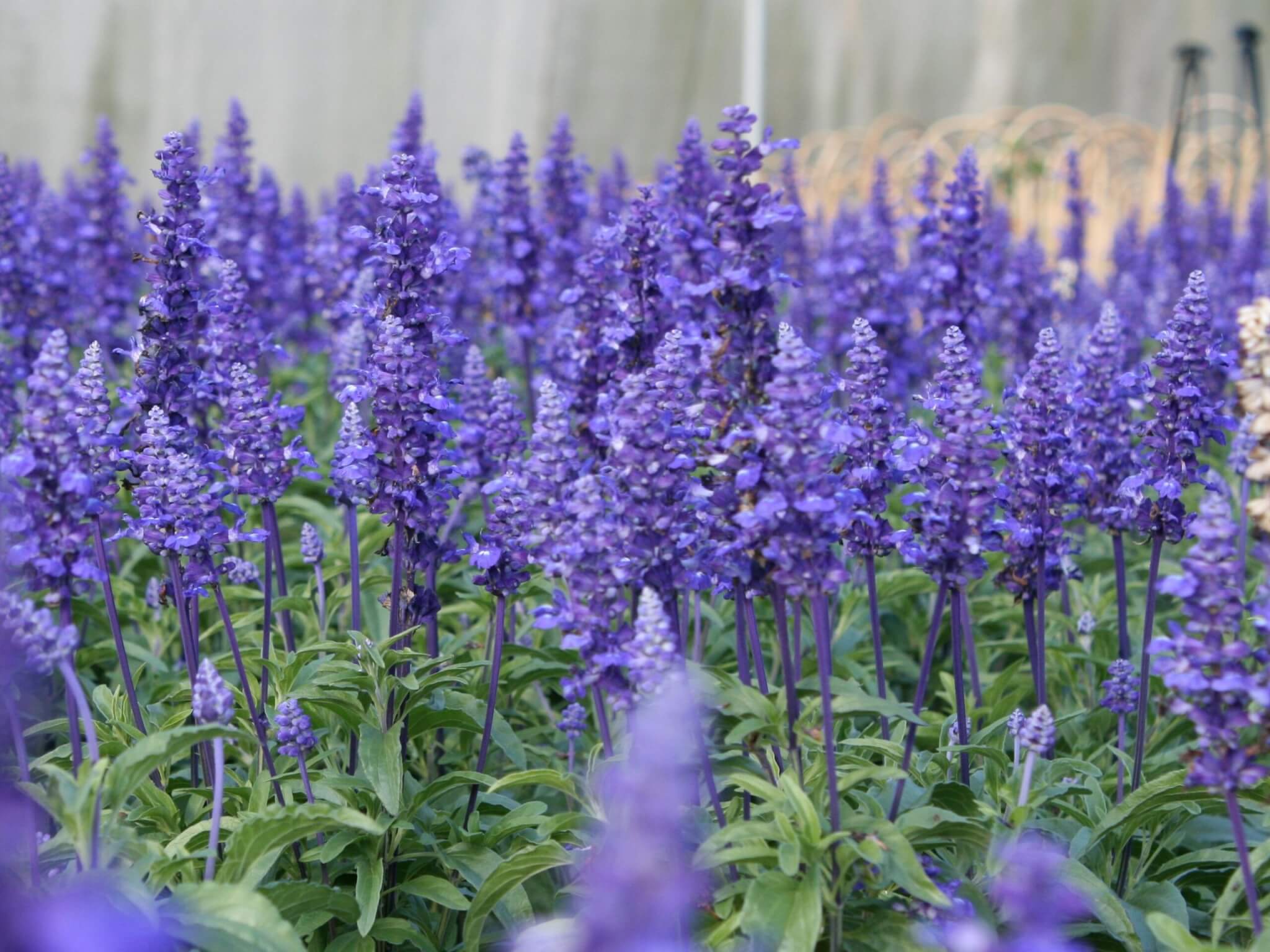
Salvia, also known as sage, is a beautiful and versatile herbaceous plant that comes in a wide variety of species and cultivars. Here are some general guidelines for growing salvia:
Select the Right Salvia Variety: There are many different types of salvia, so choose a variety that is suitable for your climate, growing conditions, and desired purpose. Common varieties include Salvia officinalis (culinary sage), Salvia splendens (scarlet sage), and Salvia nemorosa (meadow sage), among others.
Planting:
- Timing: Plant salvia in the spring after the last frost date or in the fall, giving the roots time to establish before winter.
- Sun Exposure: Salvia prefers full sun to thrive and produce abundant flowers. Make sure the planting location receives at least 6 hours of direct sunlight per day.
- Soil: Salvia grows best in well-draining soil with a pH range of 6.0 to 7.5. Amend heavy or clay soils with organic matter to improve drainage.
- Spacing: Follow the spacing recommendations for the specific variety you are growing. In general, space the plants 12 to 24 inches apart to allow for good air circulation.
Watering:
- Establishment Period: Water newly planted salvia regularly to help the roots establish. Keep the soil evenly moist but not waterlogged.
- Mature Plants: Once established, salvia is relatively drought-tolerant. Water deeply but infrequently, allowing the soil to dry out between waterings. Avoid overwatering, as it can lead to root rot.
Mulching: Apply a layer of organic mulch around the base of the plants to help conserve moisture, suppress weed growth, and regulate soil temperature. Keep the mulch a few inches away from the stems to prevent excess moisture accumulation.
Fertilization: Salvia generally doesn't require heavy fertilization. Incorporate compost or well-balanced organic fertilizer into the soil before planting. If necessary, you can apply a slow-release fertilizer once or twice during the growing season, following the instructions on the package.
Pruning:
- Deadheading: Remove faded flowers regularly (a process called deadheading) to encourage continuous blooming.
- Pruning: Trim back salvia plants after the main flowering period to encourage new growth and potentially a second flush of flowers. Cut back about one-third of the plant's height, removing any leggy or spent stems.
Pest and Disease Management: Salvia is generally resistant to pests and diseases. However, keep an eye out for common garden pests like aphids, spider mites, or powdery mildew. Use organic pest control methods if necessary, such as insecticidal soap or neem oil.
Winter Care: Some salvia varieties are perennial, while others are annual or tender perennials. Follow the specific care recommendations for the variety you are growing. In colder climates, protect perennial salvia with a layer of mulch to insulate the roots during winter.
By following these guidelines, you can enjoy the beauty and fragrance of salvia in your garden. Remember to choose the appropriate variety for your climate and growing conditions, and provide it with the proper care it needs to thrive.

No comments:
Post a Comment